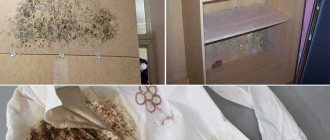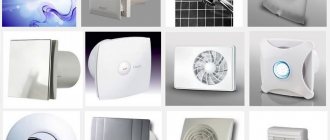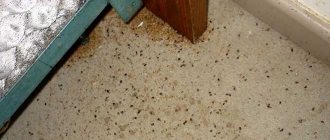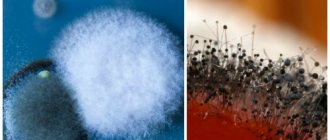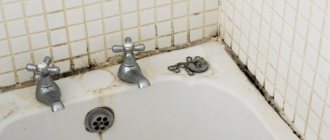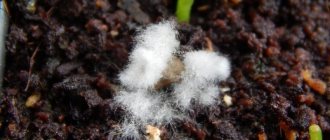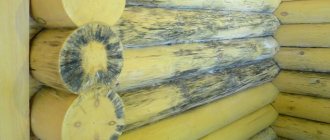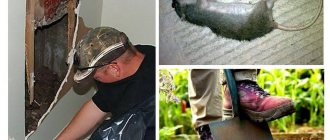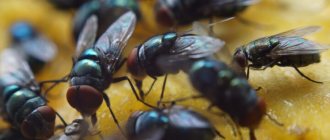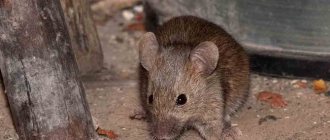Mold is an unpleasant but private surprise. It appears from improper storage, constant humidity, and “infection” of shoes from each other. Mold is a fungus and is also dangerous to humans. Spores easily contaminate surrounding surfaces, penetrate the respiratory tract and remain on the skin, causing diseases. We will look at options on how to remove mold from shoes so as not to throw away a pair. Treatment is necessary not only to restore the appearance, but also, above all, for sanitation.
Causes of unpleasant odor
Most often, the source of the unpleasant smell of dampness in shoes is the mold that has settled in them, the spores of which are contained in shoe insoles. At the same time, outwardly they may not change their structure and not become covered with green-blue stains, which is a clear sign of the presence of mold.
The causes of mold are:
- violation of basic wearing rules, incl. lack of drying after use in rainy weather;
- high humidity and lack of ventilation in storage areas;
- contamination of new shoes directly in the store or at the manufacturer’s warehouse;
- improper preparation of shoes for off-season storage, incl. insufficient cleaning and dryness.
Why does mold grow on leather and suede shoes?
To prevent this problem from affecting you in the future, you must do everything to ensure that fungi do not have the conditions for development. Therefore, you need to properly store your shoes and boots and prevent them from getting wet or waterlogged. If you take your shoes into a damp basement, there is a high chance that mold will grow there. The same thing will probably happen if you put it somewhere in the corner of the closet without taking care to thoroughly dry it in advance. Boots can also become moldy if you live or stay for a long time in an area where it rains constantly and there is no way to properly dry things. Sometimes it even happens that new shoes become infected with mold during transportation and arrive at the store in this condition.
Folk remedies
Many folk remedies help to effectively combat excess moisture due to sweat in boots and boots and remove the unpleasant moldy odor from shoes and sandals.
Ammonia
To treat mold, ammonia is mixed with vodka in equal proportions and this solution is applied to the inside of the shoe using a sponge or cloth, and also wiped over the top. Pre-washing in a soap solution helps to increase the effectiveness of ammonia.
Tea
When removing the unpleasant odor of sweat from boots, tea bags are used as a sorbent. They will be able to complement the effectiveness of treatments with other means. They are left in the shoes overnight.
Soda
Baking soda is an antiseptic that absorbs odors and disinfects surfaces. It is poured into shoes, left there for 24 hours, or the inner surface is rubbed with a thick layer of soda. After thorough drying, shake out the soda, cleaning the rubbed parts with a brush. Remains of the substance can be removed with a vacuum cleaner.
Coffee
To remove excess moisture and unpleasant odor, crushed natural coffee is poured between the insole and sole of the shoe, which provides a pleasant aroma and retains sweat particles.
Hydrogen peroxide
Hydrogen peroxide with a concentration of 3% will help to get rid of mold in shoes and boots, which is used to disinfect their inner surface by wiping it with a cloth or cotton swab soaked in the solution.
Disinfection is carried out using rubber seals.
Activated carbon
Activated carbon absorbs odor. Several tablets are crushed to a powder and poured into shoes, leaving there for 24 hours. After treatment, the carbon powder can be easily removed using a vacuum cleaner.
Potassium permangantsovka
A weak solution of potassium permanganate is suitable for treating dark leather shoes. Wipe the inner surface of the shoe with a cloth soaked in it. It is worth considering that potassium permanganate can color the material, so this method is not used for light-colored models.
other methods
The easiest way to remove moldy smell from shoes is to simply air them out or wash them thoroughly. If the dampness appeared not so long ago, then sometimes this is quite enough to get rid of it and bring the shoes into proper condition.
Ventilation
Opened shoes are left to air in a dry but well-ventilated place for several days. An unglazed balcony or street is well suited for these purposes.
In winter, frost helps eliminate odor and remove mold, and in summer, direct sunlight helps.
On the first day of airing the shoes, they are filled with paper so that it absorbs some of the moisture. After a day, the wet paper is removed.
the washing up
Wash shoes in warm water with the addition of detergents. When cleaning white shoes, you can add 1 tsp to the water. “Whiteness”, which will not only help restore it to its original color, but also disinfect the inner surface.
Sports sneakers made from natural material can be cleaned in the washing machine by first placing them in a washing bag and setting them to the delicate cycle.
After washing, the shoes are wiped dry and left to dry completely in a warm and well-ventilated place.
Replacing insoles
In most cases, the source of the odor is old insoles that have accumulated moisture during wear. Sometimes just changing them is enough to make the smell go away from your shoes.
When purchasing new shoe insoles, you should give preference to those that have a layer of charcoal or activated carbon.
Dampness - how to deal with it
An unpleasant, “basement” musty smell can be eliminated in the following ways:
Professional products
Shoe care products contain antibacterial substances that eliminate odors, speed up drying, leave no stains after treatment and increase the service life of shoes.
Deodorants
Available in the form of sprays, sticks and tablets. They are often used not only when treating shoes, but also when deodorizing the feet - the space between the toes, the tops of the feet and soles.
- Sprays . The treatment is carried out after thoroughly shaking the container by spraying at a distance of 20 cm from the surface and for 2-3 seconds. It is better to carry out internal processing in advance, with the expectation of drying.
- Sticks. Intended for daily use by applying to the inner surface of shoes.
- Pills. This is an innovative deodorizing method designed for athletes. The tablets contain components that kill bacteria and fungi. They are placed inside and left for 5-6 hours.
Powders
Shoe powders have disinfecting and flavoring properties and at the same time reduce foot sweating. The products are poured into shoes.
Absorbent bags
Shoe sachets and pillows filled with bamboo charcoal powder act as absorbents and disinfectants, absorbing moisture and odors. They are placed in shoes between uses.
Final Steps
After the washing procedure, the shoes must be thoroughly dried and ventilated, and then lubricated with cream. If, despite all your efforts, mold has reappeared and your boots or shoes smell musty, then there are two ways out of the situation. You need to consider options for using a stronger chemical agent or, unfortunately, getting rid of your favorite pair. After all, mold on shoes is dangerous because it can harm the skin of your feet.
If mold on shoes has been successfully defeated, then from now on you need to pay closer attention to the issues of its storage, so that the question of how to get rid of mustiness, the smell of mold and mold itself on your favorite boots and shoes does not come up on the agenda again.
Getting rid of cat urine odor
It is quite difficult to remove the smell of cat urine at home. It is better if the treatment is carried out immediately.
You won't be able to simply air out shoes that have gotten cat urine on them.
The damaged item is processed in several stages:
- Initially, it is washed in warm soapy water, thereby removing the cat’s urine, which he used to mark shoes or boots;
- remove traces of the main component - urochrome - using vinegar essence with a concentration of 9%, after diluting it with water in a 1:1 ratio, thoroughly wiping the surfaces inside and out;
- at the third stage, they get rid of uric acid, which stinks of spoiled things - they do this by first applying soda slurry, and after washing it off with water, glycerin;
- wash the shoes again and dry them in the open air.
The nuances of cleaning suede of different colors
To refresh the shade of light-colored boots, wipe the surface with a solution of a glass of milk and a teaspoon of soda. Shoes made of artificial, natural suede and nubuck in beige, light gray or white require a special approach to cleaning. To properly remove grease stains, sprinkle them with crushed chalk, starch, tooth powder, soda, talcum powder or fine table salt. Then brush off the residue with a rubber brush. Light-colored shoes with fur can also be cleaned with hydrogen peroxide.
You need to clean burgundy, blue, red, raspberry, pink and other colored boots carefully, avoiding alkalis and acids. It is best to wipe them with an eraser or a crust of bread. Multi-colored shoes should be cleaned of dust daily with a rubber brush. Rub brown and red boots with coffee grounds or ground coffee, and blue and black boots with carbon paper, soapy water and treat with a steamer.
Rice. 2 - Cleaning products for colored suede boots
Shoe care rules
A number of simple preventive measures will prevent the appearance of mold and dampness in shoes and keep them in good condition for a long time.
- Regular drying after wearing in inclement weather and washing shoe insoles.
- Daily use of professional care products with regular wear, incl. having water-repellent and antiseptic effects.
- Daily change of hosiery, which accumulates moisture during sweating and becomes a favorable environment for the appearance and development of fungus.
- Proper preparation for storage. Shoes that have not been used for a long time. Do not dry boots and shoes on the radiator. This is a simple and quick drying method, but it causes damage to the material. Ultraviolet light is a good assistant in drying and disinfection. The lamps not only dry shoes and eliminate their unpleasant odor, but also rid the interior space of pathogenic microorganisms that cause skin diseases.
- Proper storage. Shoes must be kept in cardboard boxes, inside of which there are bags with moisture-absorbing granules placed in them by the manufacturer. It is recommended to place paper tightly inside the closed shoe. Plastic bags are not suitable for storage.
To prevent mold from bothering you: fungus prevention
It is enough to follow a few simple storage rules during the off-season:
- Dry your shoes well before packing them away for long periods of time..
- Instead of plastic bags, it is advisable to use special fabric bags or cardboard boxes.
- Treat the inside of shoes with antifungal sprays or antiseptic solutions before long-term storage.
- Provide ventilation or periodically remove shoes to air them out.
- Place small bags of silica gel in your shoes. This substance absorbs moisture. Where can I get them? First of all, don’t throw it away after buying a new pair and some other things. A small amount of gel cat litter in a gauze bag will also work.
The problem of mold is relevant for many people. This is not a reason to throw away your favorite pair. The main thing is to properly clean and disinfect your shoes. After this, you can wear it without fear.
Hardware method
In addition to special means and folk methods, there are special devices for cleaning shoes from pathogenic microorganisms. They use air flow to dry, exposing the fungus and other infections to ultraviolet light.
A good device for improving the condition of boots or shoes in the presence of fungal spores and bacteria is Xenelight. This is a dryer with a disinfecting effect.
The set includes 2 disinfection devices, plus 2 moisture absorbers, which allows you to dry and disinfect a pair of shoes at the same time.
The main function of the device is to clean and dry shoes using ultraviolet light. 5-7 minutes are enough to achieve a disinfecting effect. The product makes it possible to get rid of fungal infections almost 100% and prevent the recurrence of the disease on the legs.
Xenelight will help disinfect your shoes
The price of the Xenelight dryer ranges from 2500–2800 rubles. The set includes 2 dryers and two disinfecting devices. The device runs on batteries. In 5–7 minutes you can achieve complete disinfection of boots, slippers, and shoes.
The hardware method of getting rid of fungus allows you to remove the infection during the period of treatment of the disease, and it is also a good preventive method. Cleaning shoes with ultraviolet light makes it possible to prevent re-infection. In addition, the disinfectant helps speed up the healing process for toenail fungus.
